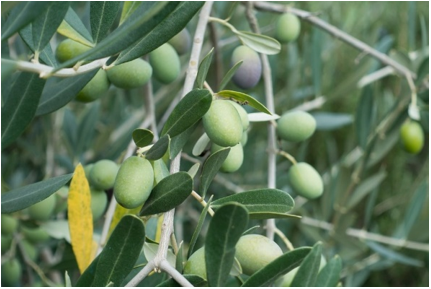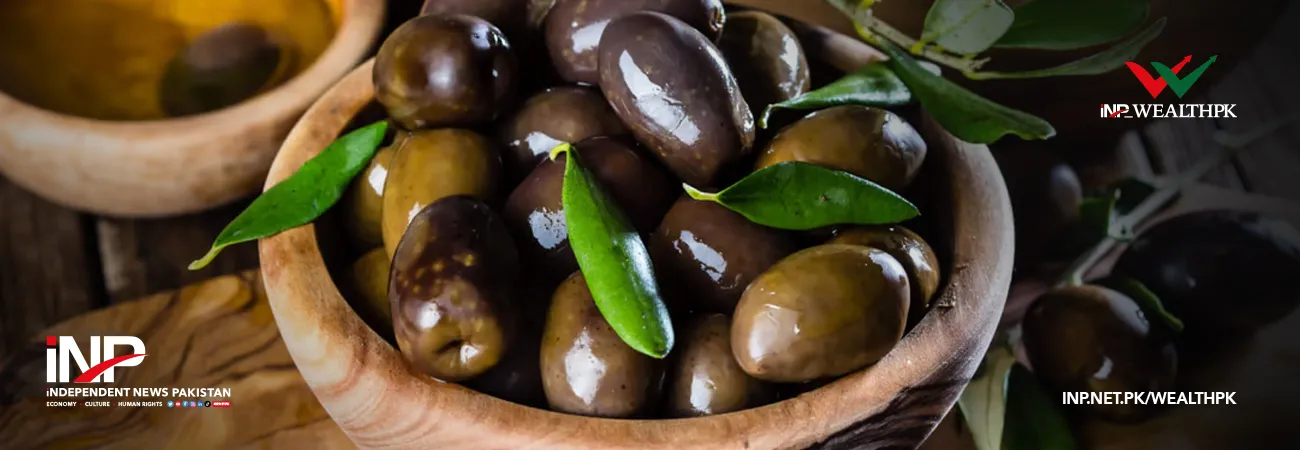INP-WealthPk
Azeem Ahmed Khan
Pakistan possesses vast stretches of wastelands well suited for olive cultivation, presenting an opportunity to meet the domestic demand and utilize the unproductive rugged terrains, researcher Umair Piracha told WealthPK.

According to Umair, millions of wild olive plants grow in the remote areas of Balochistan and other regions, but these have not been exploited commercially for oil production or other uses. He emphasized that olive farming offers economic, social, and environmental benefits, particularly because the trees can thrive in wastelands and rugged terrains where other staple crops fail.
He noted that Pakistan has more than 15 million hectares of underutilized land due to its harsh topography, which is nevertheless well-suited for olive farming. Olives grow best in warm climates; these are drought-tolerant, and sensitive to frost, Piracha explained. “Regions with hot, dry summers and mild winters are most suitable for their growth.
Olive trees begin to bear fruit around the fifth year, with maturity reaching by the ninth year,” he informed WealthPK. Once mature, olive trees rank among the most drought-resistant in the world. However, they are not true desert plants, as they still require consistent watering to grow and remain healthy, he added. Pakistan began experimental olive cultivation in 1986 with assistance from the Italian government.
Follow-up studies identified multiple regions as suitable for olive growth. Under the Debt Swap Agreement, Italy awarded Pakistan the "Promotion of Olive Cultivation for Economic Development and Poverty Alleviation" project, Piracha said. The initiative, executed through the National Agricultural Research Council (NARC), has established research facilities in Balochistan, Khyber Pakhtunkhwa, Punjab, and tribal districts (defunct FATA).
The project’s goals are to expand local edible oil production through olive farming, make use of marginal lands, improve livelihoods, and support a cleaner environment. Currently, around 2.9 million olive trees have been planted on 25,600 acres across the country, he added. The NARC-led initiative has also focused on building farmer capacity through training in orchard management, importing oil extraction machinery, and providing subsidies for oil processing and water systems such as drip irrigation.
These efforts have sparked growing interest among the farmers, with many successfully demonstrating that olives can be commercially grown in Pakistan. Plans are also underway to establish olive processing facilities with supporting infrastructure, and to promote public-private partnerships to ensure the project's long-term sustainability, he said.
In the project’s first phase, the government provided free olive plants, subsidized irrigation systems, and offered technical assistance. Approximately, 2.5 million trees have been planted across 35,000 acres in the three provinces. Progress has also been made in developing local olive varieties and nurseries, with promising results from trials involving several cultivars, Piracha said.
The most widely cultivated olive varieties around the world include Amfissa, Alfonso, Beldi, Castelvetrano, Cerignola, Gaeta, Gordal, Kalamata, Liguria, Manzanilla, Mission, Niçoise, Nyon, and Picholine. The olives cultivated in Pakistan produce up to 15 kilograms per plant, with the oil content ranging between 12% and 20%, aligning with international standards. Balochistan’s olives have the highest oil yield at 18-20%, while Punjab’s average around 12%.
Despite the project's success, limited market-based research has been conducted to understand the actual consumer demand, he noted. Interviews with farmers and officials suggest that the local olive oil production could reduce Pakistan’s edible oil import bill significantly. However, these claims may be overly optimistic given the currently low domestic demand for olive oil and its limited application in Pakistani households.
Olive oil consumption in Pakistan is mostly confined to restaurants and a small segment of upper- and middle-income consumers, he observed. It is not widely used for traditional cooking, which relies on oils from palm, sunflower, and canola that can withstand high temperatures required for deep frying. Additionally, olive oil's low smoke point and taste alterations at high heat limit its use in local cuisines.
Even in salad preparations, where olive oil is commonly used, consumption remains low. Thus, while the domestic olive oil production contributes to import substitution, its impact on reducing Pakistan’s overall edible oil imports is likely to remain modest, said the researcher. Although the general demand for olive oil is low at present, the consumption is gradually rising due to the increasing health consciousness, dietary shifts, and popularity of international cuisines like pizzas, pastas and sandwiches, he said.
This opens a niche opportunity for commercial enterprises to capture a segment of the market currently reliant on imported olive oil, Piracha said. There is also potential in exploring international markets for Pakistani olive oil, he said. However, detailed research is still needed to assess its global competitiveness and export potential, he added.
Credit: INP-WealthPk













